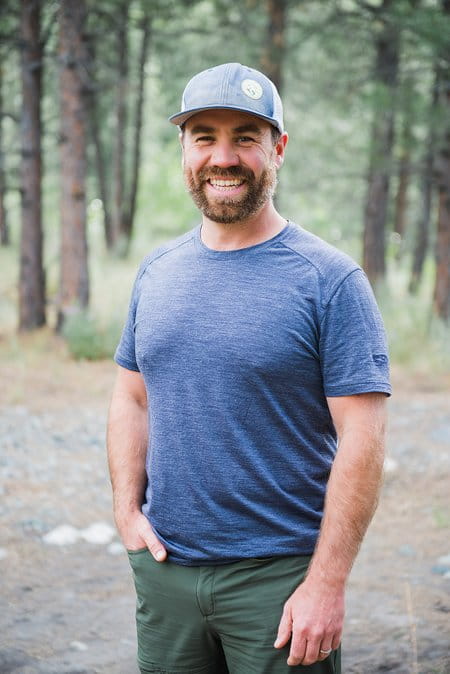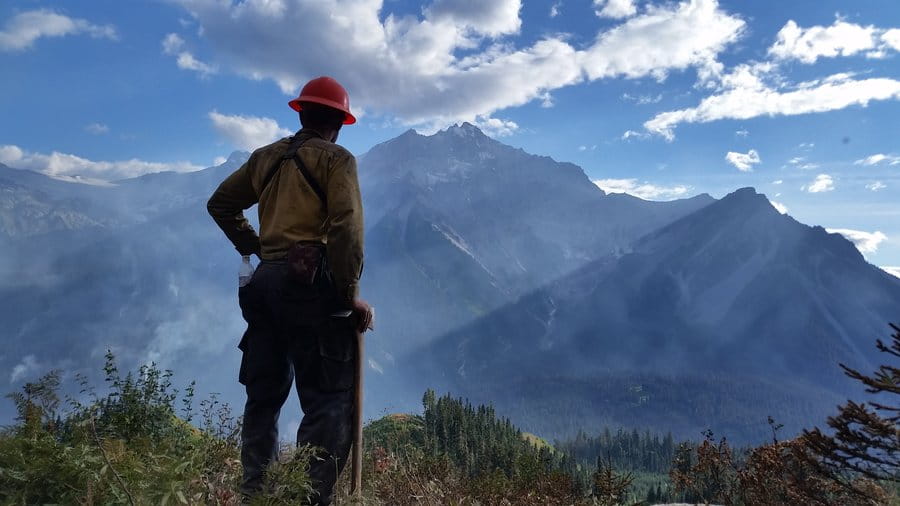
Firefighting
Qualifications
The basic qualifications to become a wildland firefighter for A+G Reforestation are:
- You can legally work in Canada
You must be able to legally work in Canada with a valid SIN or current work visa - Certifications - S100 and S185
You must have valid S100 (Fire Safety and Suppression) and S185 (Fire Entrapment Avoidance) certificates - You can pass a fitness test
You must demonstrate that you can carry a 25lb pack 2 miles in under 30 minutes
Your chances of being hired and receiving additional pay, can improve if you complete the additional qualifications such as those listed below.
- Occupational First Aid Level 1 + Transportation Endorsement
- Occupational First Aid Level 3
- Danger Tree Assessor - Wildfire Module
- BC Professional Faller
- Power Saw Operator
- Advanced S-series Fire courses
All the courses listed above are available from third-party providers.
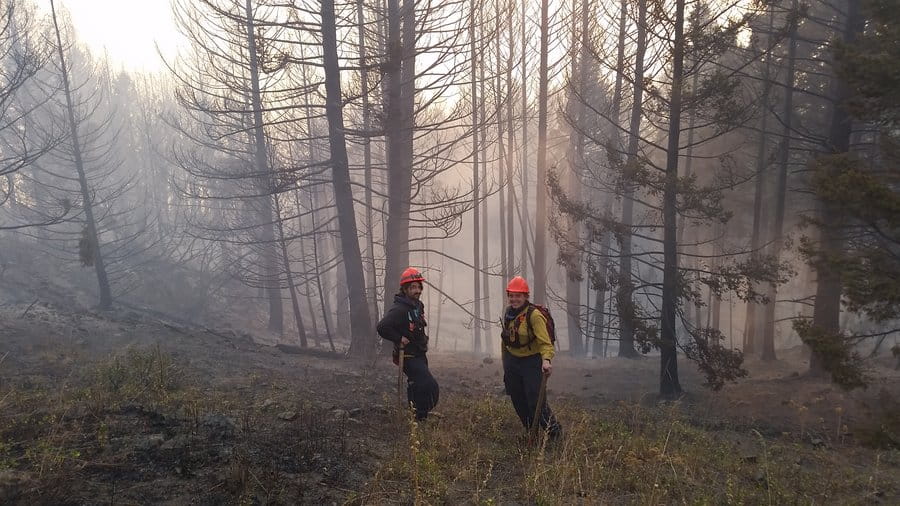
"You must have valid S100 (Fire Safety and Suppression) and S185 (Fire Entrapment Avoidance) certificates."—A+G
As with tree planting, your success depends on being able to do these three things consistently well:
We hire firefighters from our tree planting crews each year, and a select few will be rookies. These hires consistently demonstrate respect, motivation, determination, grit and patience each day. Fire fighting is an extremely demanding job - both physically and mentally. You’ll work 12-hour days on average, and sometimes up to 16 hours. You’ll be exhausted. You’ll be part of a tight-knit crew and have very little space from them. Or you may end up on a 14-day standby shift where you spend all day each day in a state of readiness. Boredom can set in, and patience can dwindle. This is not just a strenuous job physically, but mentally.
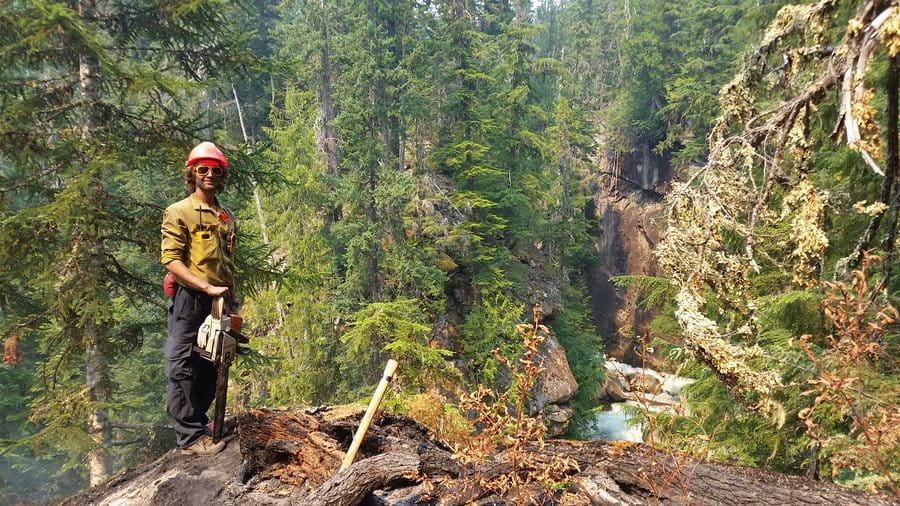
"Focus on your success and the success of your crew."—A+G
Our firefighting crews are hired by the BC Wildfire Service (BCWS) on an “as-and-when-needed” basis. After we screen and accept potential firefighter applicants, they are added to our roster of ‘active’ and available firefighters, at which point we wait for a Service request from the BC Wildfire Service. When we get this request, we immediately draw from our roster of active/available firefighters.
The fire season tends to ramp up in early July and wind down by early September, although this is not really predictable. To start the season you’ll be stationed at one of two A+G base locations: Squamish, or Princeton. You may not be there very long because as a firefighter you never know where you’ll be deployed until the very last minute. You and your crew could be sent to a fire camp in Northern BC, a motel in the Okanagan, or a fire base on the coast.
You will typically have 12 hours to accept a call-out and report to the A+G base location. Up until that call out, most of our firefighters go about their normal lives while keeping a ‘go bag’ with all of their fire gear packed at all times so they can quickly accept a deployment when the call comes.
When you get a call for standby or deployment, you will be given a reporting time and location. If you can make the timing work you may accept the posting and you must report at the specific time and location. You can’t be late. If you cannot make the timing work, you must not accept the posting and you will remain on the call-list for the next opportunity.
Beyond the satisfaction of being a contributing team player in a complex and dynamic work environment, you get paid. Firefighters are paid by the hour and eligible for overtime. Days are generally 12 - and possibly up to 16 - hours long. Your deployment may be up to 14 days in a row (not including travel days). As a firefighter you must be available for the entire deployment period.
There can be up to 2 days of travel time on either end of your deployment. You are responsible for getting yourself to the A+G base location, but once there, you are considered ‘on deployment’ and will do everything together with your crew - including travel. All travel time is paid.
Daily wages range from $230 to greater than $550 per day depending on experience, training and seniority. Payroll is processed every two weeks. Every two weeks you’ll get a formal pay-stub detailing your hours worked, rates, taxes, etc. All payroll is via direct deposit.
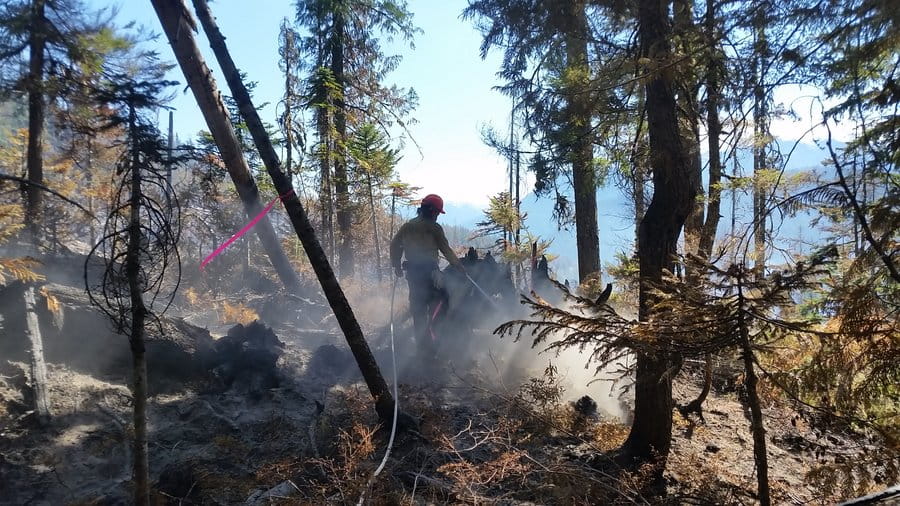
"We hire firefighters from our tree planting crews each year, and a select few will be rookies."—A+G
We provide all employees with a detailed ‘gear list’ of personal equipment that you must have. This includes things like a good quality backpack, a large duffle bag, camping equipment, leather work boots (no steel toes), etc. You must arrive with all of the personal gear required, as you may not be able to re-supply or purchase additional equipment once deployed.
A+G provides all transportation, fire-tools, fire equipment, and accommodations. We provide personal protective equipment at cost. Nomex fire uniforms are available either for purchase, or for rent.
Where you sleep can vary depending on the location of the fire, its size and intensity, and the accommodations available nearby. This could mean staying in your personal tent in a large fire camp - a work-camp purpose-built for sustained action on a large fire - or you might be staying in a motel, or in an existing logging or mining camp.
There is little-to-no free time during a fire deployment. A firefighter must be ready to work long shifts - for up to 14 days straight - with a small crew of the same people. All deployments are strictly ‘dry’. Due to the nature of emergency services work a firefighter must not be impaired or potentially impaired in the workplace. As such, there is no consumption of alcohol, marijuana, or other impairing substances allowed at any time during a deployment.
You’ll have even more opportunities if and when you return for your second season. After becoming a certified firefighter, you can pursue additional specialty training that allows you to gain more experience on the fireline, with commensurate increases in pay.
Some examples of additional certifications you can achieve are:
- Certified Danger Tree Assessor (Wildfire Module)
- Power Saw Operator
- BC Professional Faller
- Occupational First Aid (Level 1 + Transportation Endorsement) or Level 3
A Letter from Carlo
"I was drawn to forest firefighting very early on in my career. For me, wildland firefighting provides an opportunity to combine many of my professional/vocational areas of interest, including: Fighting fire, aviation operations, rope and water systems, community/public service, working outdoors, and working with a team of other people. For me, it ticks a lot of boxes. After a couple seasons working with a 3-person initial-attack crew with the BC Wildfire Service, I set off to start the wildland firefighting program at A+G, providing high-quality contract crews to the Province of BC.
My top reasons for becoming a wildland firefighter:
Witnessing the force of wildfire, and working to direct/manage that force is an exhilarating and humbling experience.
There is a deep sense of pride that comes from protecting the values at risk; whether those are homes, cultural/social assets, timber values, etc.
There is a camaraderie that is unique to firefighting. It is a job that forces you to interact with a wide variety of people, and to look out for each other’s well-being despite personal differences.
The gear: working with, and around helicopters, chainsaws, water-pumps, hose-lays, water-delivery systems, water-bombers, etc. (yes, this is my inner ‘gear-head' speaking)
Like tree planting, you have the opportunity to work in some of the most beautiful places in the country (and in my opinion, on the planet).
Indeed, this job isn’t for everyone. It takes a special kind of person to be able to live and work with a small team of people in such challenging, and constantly changing conditions. But, for those that are called to it: they will experience a truly unique working environment."
– Carlo Galvani, Owner